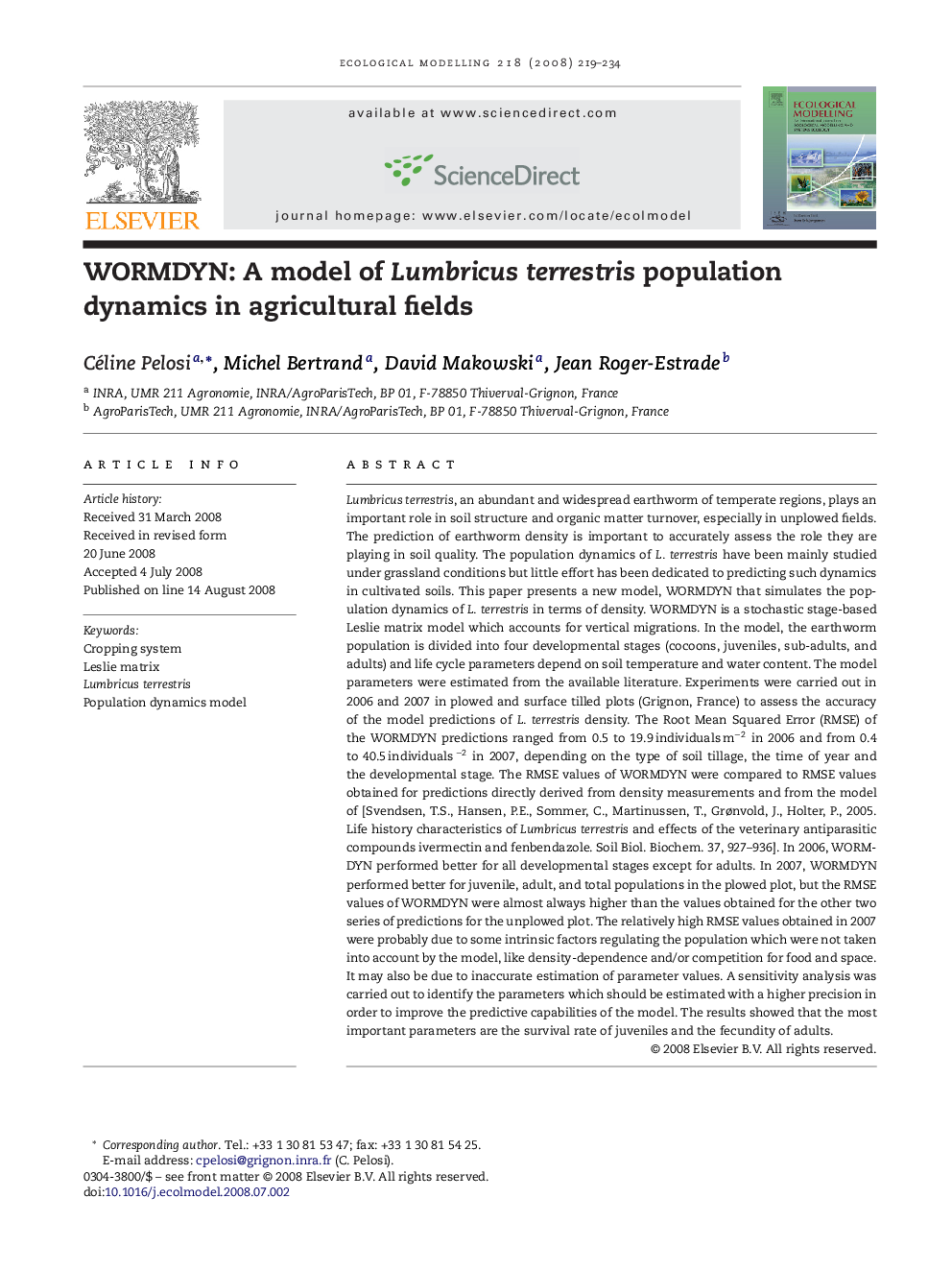| Article ID | Journal | Published Year | Pages | File Type |
|---|---|---|---|---|
| 4378429 | Ecological Modelling | 2008 | 16 Pages |
Lumbricus terrestris, an abundant and widespread earthworm of temperate regions, plays an important role in soil structure and organic matter turnover, especially in unplowed fields. The prediction of earthworm density is important to accurately assess the role they are playing in soil quality. The population dynamics of L. terrestris have been mainly studied under grassland conditions but little effort has been dedicated to predicting such dynamics in cultivated soils. This paper presents a new model, WORMDYN that simulates the population dynamics of L. terrestris in terms of density. WORMDYN is a stochastic stage-based Leslie matrix model which accounts for vertical migrations. In the model, the earthworm population is divided into four developmental stages (cocoons, juveniles, sub-adults, and adults) and life cycle parameters depend on soil temperature and water content. The model parameters were estimated from the available literature. Experiments were carried out in 2006 and 2007 in plowed and surface tilled plots (Grignon, France) to assess the accuracy of the model predictions of L. terrestris density. The Root Mean Squared Error (RMSE) of the WORMDYN predictions ranged from 0.5 to 19.9 individuals m−2 in 2006 and from 0.4 to 40.5 individuals −2 in 2007, depending on the type of soil tillage, the time of year and the developmental stage. The RMSE values of WORMDYN were compared to RMSE values obtained for predictions directly derived from density measurements and from the model of [Svendsen, T.S., Hansen, P.E., Sommer, C., Martinussen, T., Grønvold, J., Holter, P., 2005. Life history characteristics of Lumbricus terrestris and effects of the veterinary antiparasitic compounds ivermectin and fenbendazole. Soil Biol. Biochem. 37, 927–936]. In 2006, WORMDYN performed better for all developmental stages except for adults. In 2007, WORMDYN performed better for juvenile, adult, and total populations in the plowed plot, but the RMSE values of WORMDYN were almost always higher than the values obtained for the other two series of predictions for the unplowed plot. The relatively high RMSE values obtained in 2007 were probably due to some intrinsic factors regulating the population which were not taken into account by the model, like density-dependence and/or competition for food and space. It may also be due to inaccurate estimation of parameter values. A sensitivity analysis was carried out to identify the parameters which should be estimated with a higher precision in order to improve the predictive capabilities of the model. The results showed that the most important parameters are the survival rate of juveniles and the fecundity of adults.
